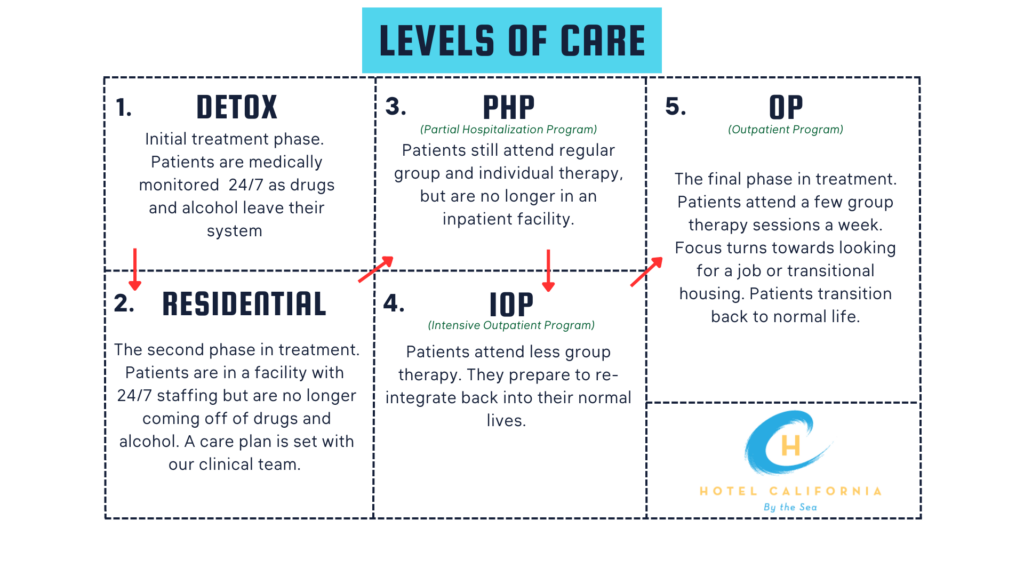What is Sober Living?
For some people, sober living can be a defining factor in helping someone to remain sober during and after substance use disorder treatment. A 2021 study found that sober living residents were more likely to remain in outpatient treatment for longer compared to those who were not in sober living homes. Sober living is a transitional space allowing clients to move from a structured residential treatment environment into mainstream society.

Sober living is usually a residential facility in which all house residents are sober. Most residents have also recently completed or are in the process of completing inpatient residential treatment or outpatient treatments. Sober living is not a type of formal treatment. There are some sober living houses that are associated with behavioral treatment programs that are provided for clients enrolled in residential or outpatient treatment. But, in general, sober living does not offer individual counseling or treatment. However, residents do have options for support groups to help them maintain sobriety during the early days after formal treatment has ended.
In a study from the Alcohol Treatment Quarterly Journal, research found that sober living could help significantly improve the outcomes of substance use disorder treatment. It can help improve abstinence for up to 18 months after treatment. It can help improve overall mental health. It can help improve the employment rate among clients in or out of treatment. It can help reduce drug misuse. It can help create a sense of self-confidence and self-efficacy. It can also help increase attendance for group treatments such as group therapy, family therapy or recovery support therapy.
What is Sober Living?
Sober living arrangements first originated in the 1940s. It was formed by a group of active Alcoholics Anonymous residents who decided to create a home for those active in the 12-step program. Since then, sober living homes have evolved and grown to meet the different needs of patients in recovery and early sobriety.
In traditional sober living homes, residents may pay an affordable monthly fee for rent, maintain attendance in recovery groups and remain sober. Sober living homes that are re-entry programs are a type of housing that helps formerly incarcerated people. This is also known as a halfway house.
Sober living provides structure and support for those who are in recovery from substance use disorder. Sober living provides a supportive community network of like-minded peers who have experienced similar life situations. Sober living encourages abstinence and helps to keep you accountable for your commitment to sobriety. Sober living helps you learn, develop and practice what you’ve learned in treatment and apply to real life. It can help you manage tough situations and triggers you may encounter once you are reintroduced into mainstream society.

What is a Sober House?
The National Association of Recovery Residences defines different categories of sober houses.
- Level 1 Sober Living. This type of housing is fully peer-run. It is usually a single-family home and is democratically run by a senior resident who holds other residents accountable through drug screenings and house meetings. There are no paid or clinical positions within this sober living home.
- Level 2 Sober Living. This type of housing is formally monitored with at least one paid staff member on site. It is usually a single-family home or apartment run by a senior resident or a formal house manager who is compensated for their job. The house policies consist of drug screenings, house meetings and peer-run support group meetings along with other house rules.
- Level 3 Sober Living. This type of housing is formally supervised by certified staff. It is usually a home or clinical facility that is licensed with organizational structure and administrative oversight. There are formal policies and procedures that are followed. This type of sober living focuses on life skill development and emphasizes clinical services available to residents.
- Level 4 Sober Living. This type of housing is integrated with administrative supervision and credentialed staff. In this type of housing, services are provided in a more institutional environment and are a formal transitional service for people contemplating addiction treatment programs. Clinical services are provided in the house with a strong emphasis on life skill development. The sober living home is professionally staffed and licensed.
General Policies of a Sober Living House
- Attending some sort of peer support program such as AA, NA or SMART
- Being accountable for your sobriety
- Be involved in mutual aid support for other sober residents
- Foster communal learning
- Undergo regular drug screening
- Maintain sobriety
- Keeping common areas clean
- Submit to room searches
- Attend regularly scheduled house meetings
- Wake up calls and curfews
- Refrain from violent and incorporate behavior
Benefits of Sober Living
- You can create positive sober friendships
- You have time to practice your new sober lifestyle
- You are in safe and stable environment
- You learn new skill to help you manage and maintain sobriety
- You learn how to gain employment and financial responsibility
- You create positive personal and peer relationships
- You have a community network of resources
Check Your Insurance Coverage for FREE
Find out if your insurance covers addiction treatment in minutes. We accept most insurance!
What is the difference between Sober Living and Halfway Houses?
Halfway houses and sober living houses are similar in terms of allowing a person to stay as they are at a point of transition in their life. Though they may provide similar resources, sober living homes and halfway house are not the same.
Halfway House
- Halfway house is an environment that is the middle point between institution and independent society.
- Residents of halfway homes usually come from correctional or inpatient treatment facilities. They are transitional housing for people who have been incarcerated and need a place to stay while they move back into independent life.
- Halfway houses are meant to gradually introduce residents back into independent society free from drugs, pressures and triggers they may face in their home environment.
- Residents of halfway houses are court mandated to live there.
- Residents of halfway houses are not required to be involved in 12 step programs or other types of addiction support recovery programs.
- Halfway houses are owned or sponsored by the state.
- Halfway homes are under the supervision of a parole or probation officer. Residents are not permitted to come and go as they please.
- Residency In halfway homes is limited.
- Halfway homes provide structured programs designed to help residents get back on their feet as soon as possible.
Sober Living Home
- Sober living environments vary widely. All residents of sober living homes voluntarily live there and are not mandated. They may choose sober living because they are in need of extra support during the early days of recovery.
- Some sober living homes have shared bedrooms and offer clinical support through inpatient or outpatient programs.
- Sober living home is where a person in substance recovery can transition into independent living while learning how to use and obtain community resources for long term recovery.
- Sober living residents can come and go as they please as long as they abide by house policies.
- Sober living is a built in support system that can help residents avoid isolation.
- Sober living homes are usually privately own and funded. Residents usually pay an affordable fee to live there while they get back on their feet.
Who is a candidate for Sober Living?
So who is sober living for? Sober living is often recommended for those who are finishing up treatment programs but still need extra support as they transition into independent life. If may still be too much for them. A sober living environment may provide them with the extra buffer, time and resources they need before becoming fully independent. Sober living can also be beneficial for those who do not have a safe or stable home environment to return to after treatment. Sometimes recovery and treatment can feel isolating and lonely. Sober living provides a build in support system of like-minded peers who may also have experienced similar situations. Sober living can also be highly beneficial for those who are still struggling to maintain sobriety.
Reach out to Hotel California by the Sea
We specialize in treating addiction and other co-occurring disorders, such as PTSD. Our Admissions specialists are available to walk you through the best options for treating your addiction.
Substance Use Disorder Treatment
Substance use disorder can be a difficult disease to overcome. Professional behavioral health treatment programs such as Hotel California by the Sea provide the tools, resources and support clients need to successfully treat their addiction. We offer detox, residential, PHP and IOP. Our program utilizes effective treatment methods such as CBT, DBT and family therapy. Hotel California by the Sea can transform a client by addressing every aspect of addiction. Treating the emotional, physical and psychological aspects of addiction will help clients bring clarity and a newfound outlook on their recovery.
References:
https://www.hazeldenbettyford.org/articles/what-is-sober-living
https://www.addictioncenter.com/treatment/sober-living-homes
https://www.verywellmind.com/what-is-a-sober-living-house-5496284
